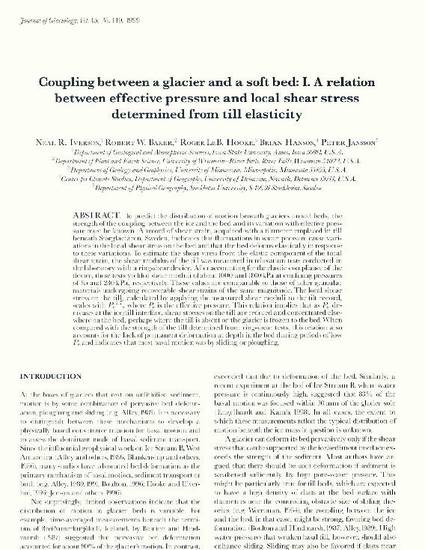
To predict the distribution of motion beneath glaciers on soft beds, the strength of the coupling between the ice and the bed and its variation with effective pressure must be known. A record of shear strain, acquired with a tiltmeter emplaced in till beneath Storglaciären, Sweden, indicates that fluctuations in water pressure cause variations in the local shear stress on the bed and that the bed deforms elastically in response to these variations. To estimate the shear stress from the elastic component of the total shear strain, the shear modulus of the till was measured in relaxation tests conducted in the laboratory with a ring-shear device. After accounting for the elastic compliance of the device, these tests yielded shear moduli of about 1000 and 1800 kPa at confining pressures of 85 and 280 kPa, respectively. These values are comparable to those of other granular materials undergoing recoverable shear strains of the same magnitude. The local shear stress on the till, calculated by applying the measured shear moduli to the tilt record, scales with ? e 1.7, where P e is the effective pressure. This relation implies that as P e decreases at the ice/till interface, shear stresses on the till are reduced and concentrated elsewhere on the bed, perhaps where the till is absent or the glacier is frozen to the bed. When compared with the strength of the till determined from ring-shear tests, this relation also accounts for the lack of permanent deformation at depth in the bed during periods of low P e and indicates that most basal motion was by sliding or ploughing.
Available at: http://works.bepress.com/neal-iverson/24/

This article is from Journal of Glaciology 45 (1999): 31, doi:10.3198/1999JoG45-149-31-40. Posted with permission.